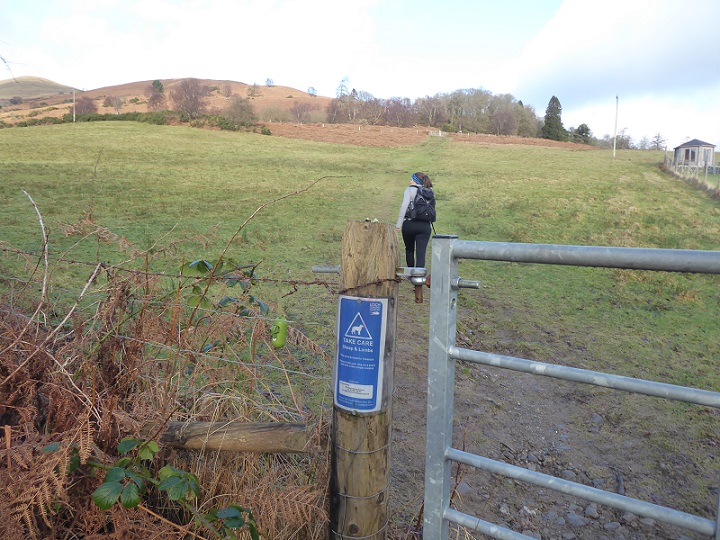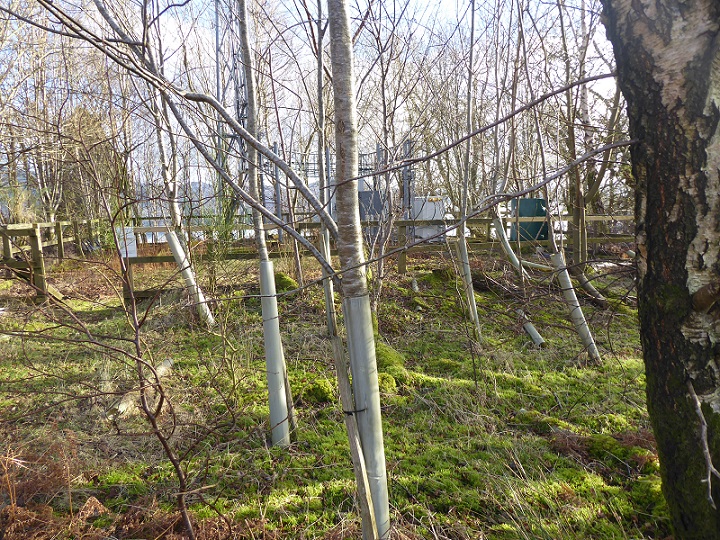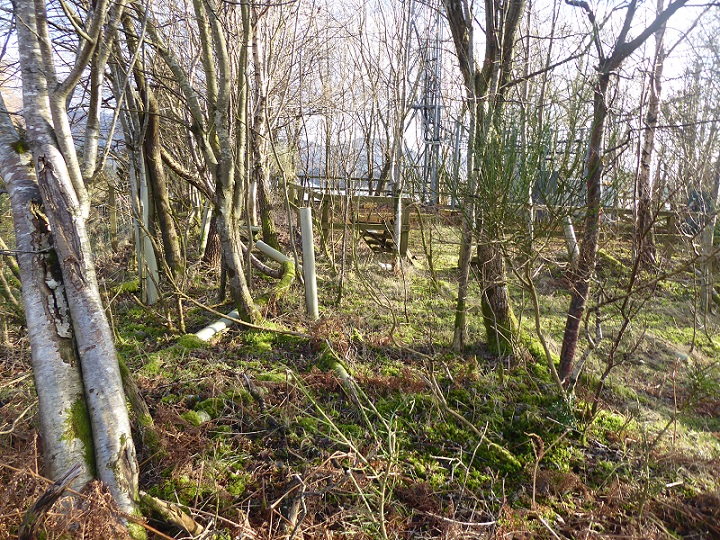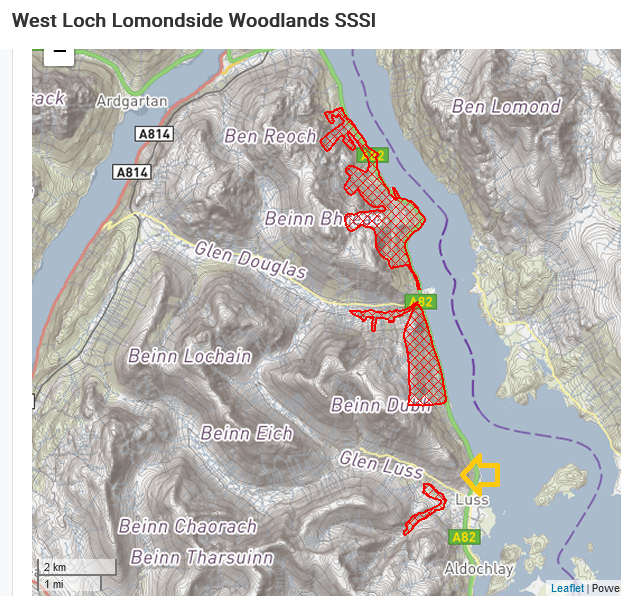
Not far above the start of the path up Beinn Dubh which I went up ten days ago (see see), there is a fine stand of oak trees, called Strone Wood. I have not researched its history but, like the other oak woods round Loch Lomond, it is likely to owe its existence to our use of oak products such as charcoal and tannin, only to be abandoned when the last of those industries closed about 100 years ago.

The wood lies above a fenced field, which is how most sheep should be managed, enclosed within stock fences rather than left to roam the open hill. The isolated trees on the hillside to the left of the wood indicate that there was a period when grazing pressure on the open ground was low enough to enable trees to become established through natural regeneration.

There is further evidence for an increase in grazing pressure just above the wood. The lower branches of the self-seeded Sitka on the left have been heavily browsed giving the tree its tattered shape. Any more palatable deciduous trees of similar age which seeded outside the fencing won’t have had a chance.

It did not take me long to find a couple of heavily browsed holly within Strone Wood, evidence that an understorey would regenerate naturally if given a chance.
 Instead of regenerating, however, the wood is now dying with lots of the old trees which had been left to re-wild now reaching the end of their lives. This is bad for nature and bad for the climate. Death through neglect, a failure to care about the impact of grazing.
Instead of regenerating, however, the wood is now dying with lots of the old trees which had been left to re-wild now reaching the end of their lives. This is bad for nature and bad for the climate. Death through neglect, a failure to care about the impact of grazing.
Just above and adjacent to Strone Wood there an example of how not to do conservation. A small enclosure has been created around what I assumed to be telecommunication equipment and trees planted to help screen it:

Neither the planting nor the plastic tubes were necessary, as you can see from the saplings in this and the photo below. The tree tubes, as usually happens, are now littering and releasing plastic into the natural environment.

Enclosures get neglected too and also illustrate that if the Loch Lomond and Trossachs National Park Authority (LLTNPA) want the Loch Lomond oak woods to regenerate their focus needs to be on reducing grazing pressure and containing livestock.
Discussion

The West Loch Lomondside woodland SSSI (see here), which is also a Special Area of Conservation, was designated for its upland oak woodland. It was assessed as being in unfavourable condition by Scottish Natural Heritage in 2001 (due to overgrazing, invasive rhododendron and forest operations) and that does not appear to have changed.
What was designated and what not appears to be partly a matter of historical accident, the woods that were in the best condition at the time were protected, the others not. Strone was also probably too small for hard press conservationists to worry about.
However, you can see from the map that if we are serious about landscape scale conservation to tackle the nature and climate crises, we should be trying to connect the southern woodland fragment with the much bigger to the north. If Strone Wood (and some of the other woodland in Glen Luss) was regenerating, instead of dying, it would help make that connection. So why not do something to remove the grazing pressure?
The Strone Wood lies within Scotland’s temperate rain forest zone, although it is not itself rain forest. In their 2019 report on The state of Scotland’s rainforest the Woodland Trust estimated that there was only about 30,000 hectares of rainforest left in Scotland’s temperate forest zone. But as the report also stated:
“The other 63,000 hectares of native woodland on the west coast is potentially rainforest and would benefit from safeguarding and management to ensure its survival”.
Presumably they were referring to places like Strone Wood.
At the time of that report, the Woodland Trust and other conservation organisations also launched the Alliance to Save Scotland’s Rainforests. One of the founding members was the LLTNPA who issued a news release at the time (see here) in which they stated:
“By better managing and expanding our native woodlands, we not only increase the diversity of wildlife they support, but also help build resilience to the impacts of a warming climate – a vital legacy for future generations.”
Its now almost four years later and its time for the LLTNPA either to explain what has changed for the better (while travelling by I have noted with interest the sheep grazing other areas of oak woodland along west Loch Lomondside) or to come clean about why they have been unable to improve the condition of places like Strone Wood. Nothing will change until there is open discussion about the problems caused by overgrazing.